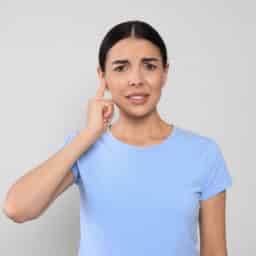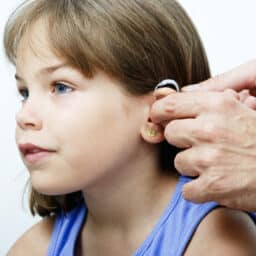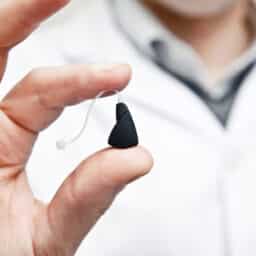Why Hearing Protection Matters as Temperatures Drop

Have you ever noticed that, in cold weather, your nose and ears are the first things to get cold? Turns out, the effects of cold weather on your ears can have an impact on your hearing health. Let’s discuss why that is and ways you can protect yourself. How Does the Cold Impact Hearing? The…
What Does Tinnitus Sound Like?

No two people experience tinnitus in exactly the same way, which is significant, considering 25 million people suffer from it. It is regularly described as “ears ringing,” but that’s not the only sound tinnitus can manifest as. Let’s discuss what tinnitus can sound like and why it can vary so widely. Why Tinnitus Sounds…
Staying Active with Hearing Aids

Staying physically active is an important part of staying healthy and connected. If you live an active lifestyle and are a new hearing aid user, you may be wondering how exercising and engaging in physical activities and hobbies will work with your hearing aids. This is a common concern among new hearing aid users, so…
What’s The Difference Between Tinnitus and Hyperacusis?

Tinnitus and hyperacusis are frustrating, sometimes debilitating conditions that negatively affect quality of life. Both conditions involve the perception of sound in the ear, are usually caused by another underlying cause and are treatable. Since both tinnitus and hyperacusis pertain to background noise and your ear’s perception of the background noise, the two conditions might…
How Does Sound Therapy for Tinnitus Work?

Tinnitus is both frustrating and common. Roughly 20% of the American adult population—about 50 million people—has experienced tinnitus. Tinnitus is characterized by a sound in the head that has no external source. This can be a ringing, buzzing, whooshing or roaring sound, and since there is no external source, your brain gets confused about where…
The Role of Audiologists in Fall Risk Assessment

Research has increasingly shown a link between hearing loss, balance problems and fall risk, particularly in older adults. Audiologists play a crucial part in identifying and addressing these risks before they lead to serious injury. How Hearing and Balance Are Connected The inner ear is responsible not only for processing sound but also for helping…
Is Hearing Loss Genetic?

Hearing loss can affect people of all age groups, and while many cases are linked to aging, noise exposure or illness, some are rooted in genetics. Understanding whether hearing loss is genetic can offer insight into your personal risk and help inform decisions about screening, early intervention and long-term care. How Hearing Loss Occurs Hearing…
How to Select the Right Hearing Aids for Your Needs

Nearly 28.8 million Americans could benefit from using hearing aids, but many go without. Some people may not know where to start with selecting the right hearing aids due to the many styles and features available. With a little guidance and a professional assessment, you’ll be equipped to make an informed decision that improves your…
Can I Have Tinnitus in One Ear?

Tinnitus is the perception of sound when no sound is present. Around 10% of American adults have experienced tinnitus symptoms lasting at least five minutes in the past year. Unilateral tinnitus is a form of tinnitus where a person only has tinnitus symptoms in one ear. Causes for Unilateral Tinnitus A variety of factors can…
Strategies for Listening to Music with Hearing Loss

When living with hearing loss, activities you once cherished, like listening to your favorite music, can become less enjoyable. You may find it hard to distinguish between instruments or struggle to make out lyrics clearly. While hearing aids help many people overcome these challenges and enjoy music again, they aren’t always the complete solution for…
